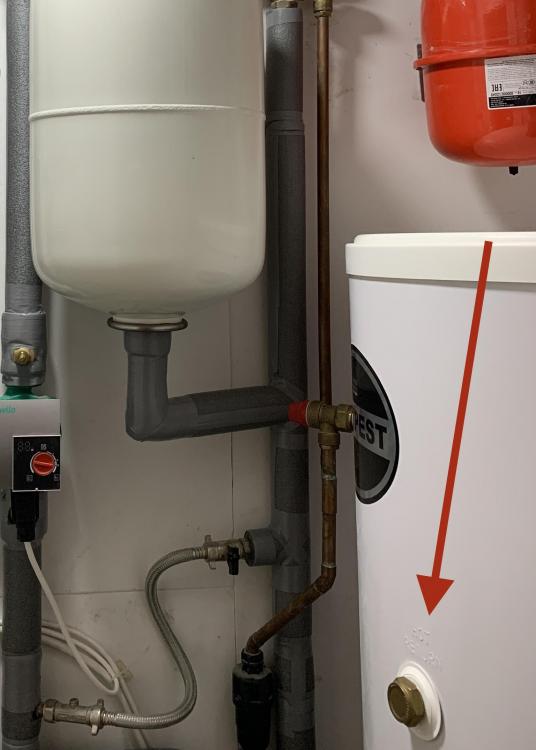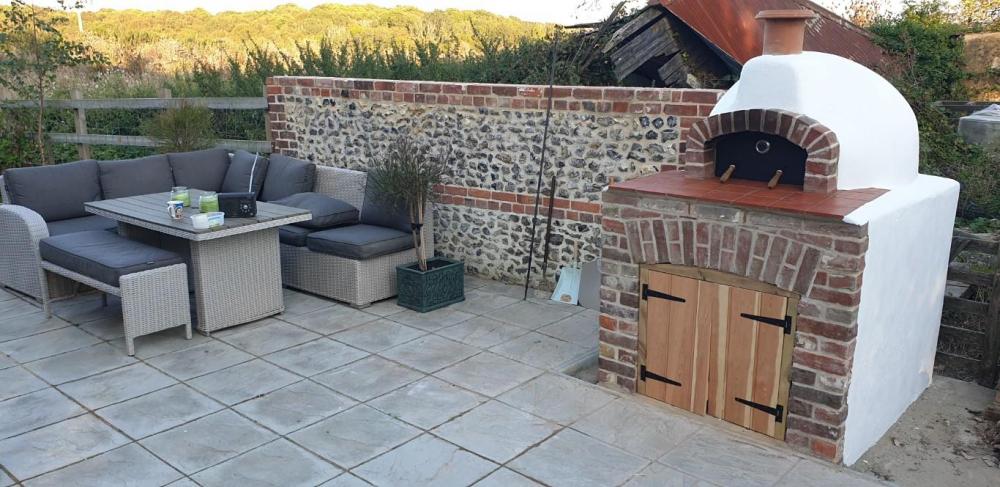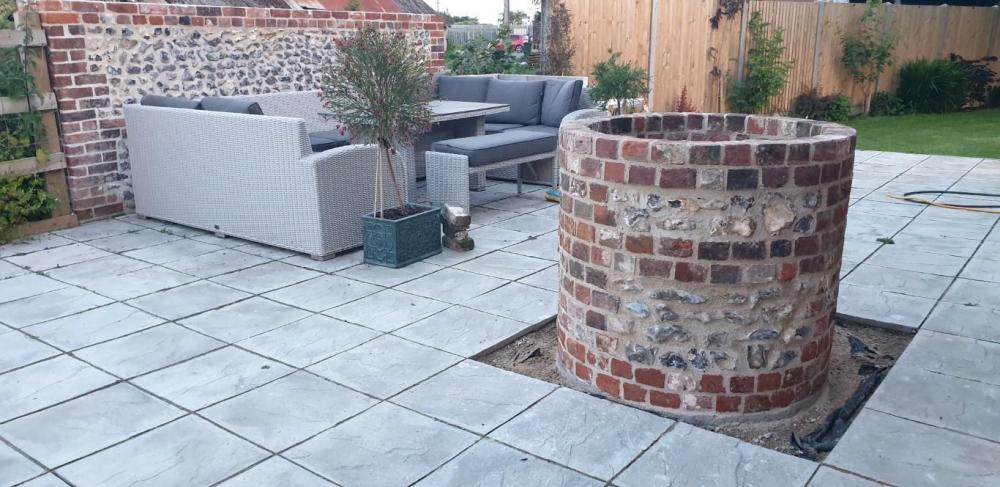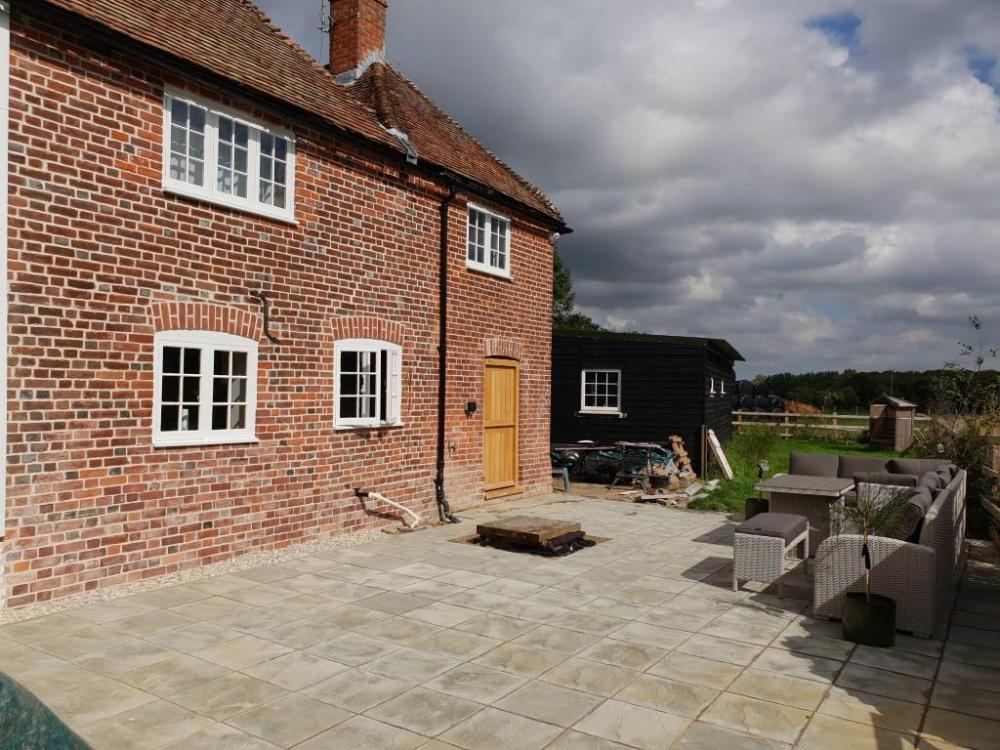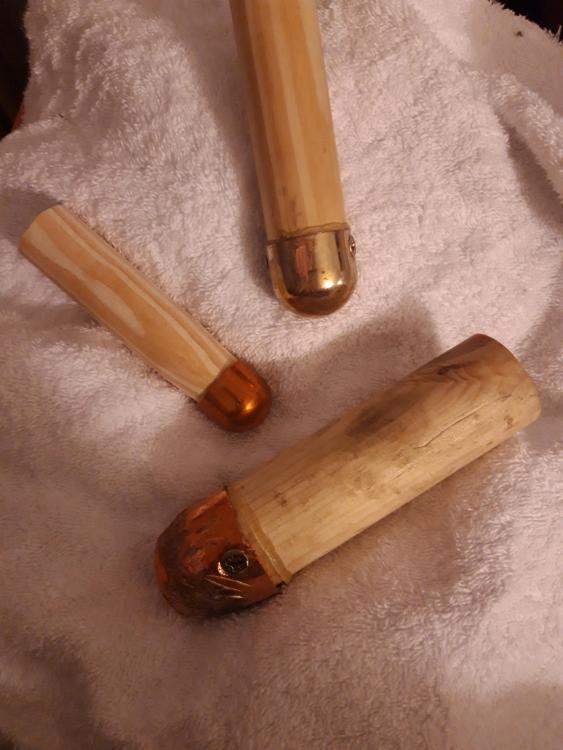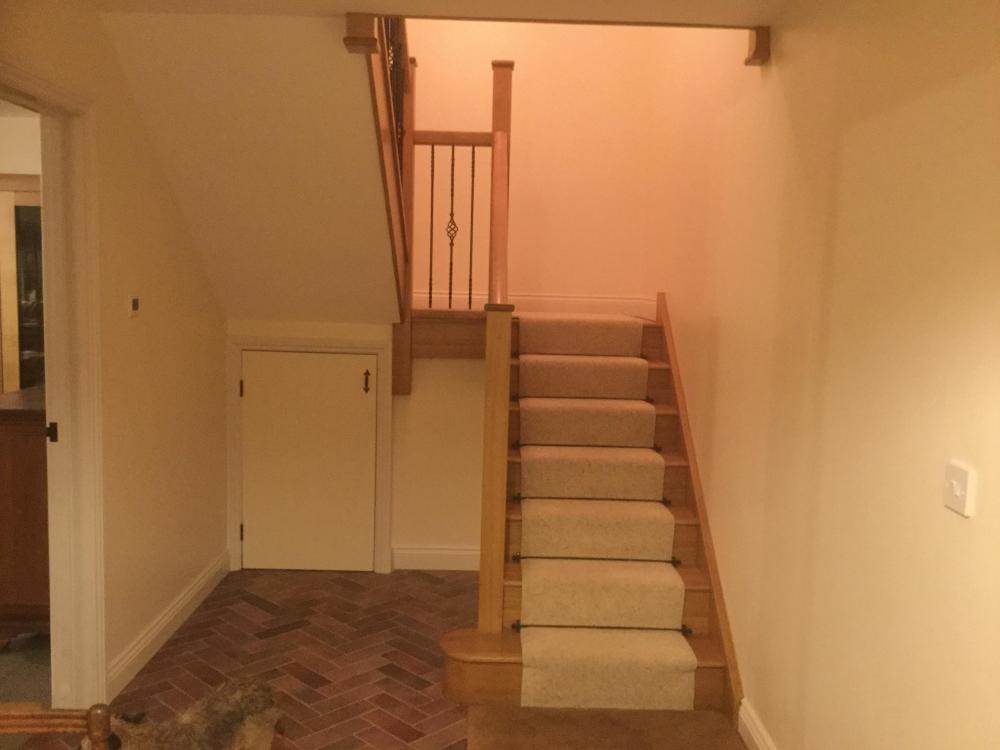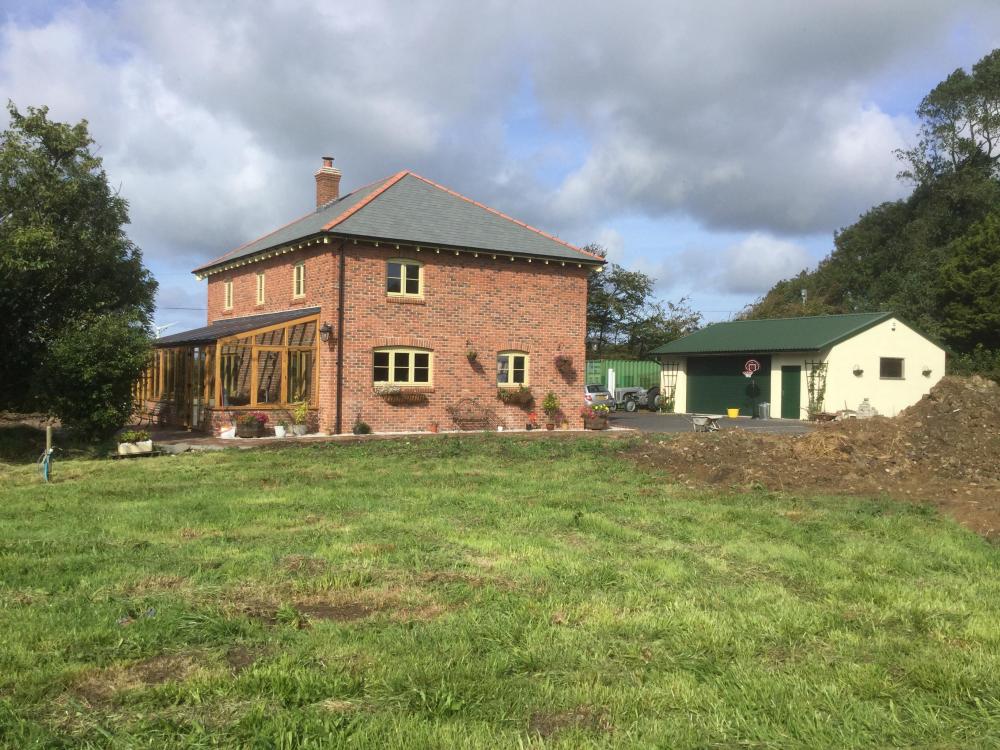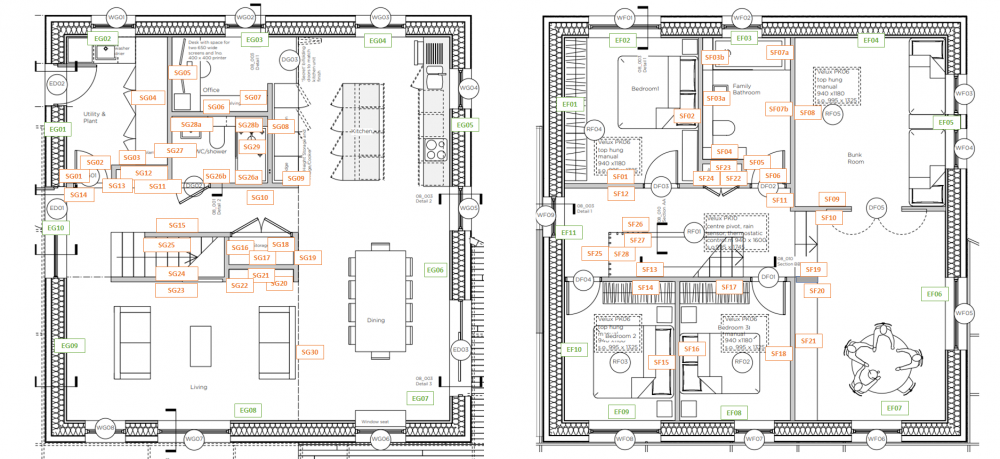Leaderboard
Popular Content
Showing content with the highest reputation on 11/23/19 in all areas
-
You absolutely must build one , live in it . Build the other . Sell 1st and live in 2nd Its not a quick turnaround but certainly don’t hand over CGT to the taxman ! Good on you for getting planning for 2 - maximise the return on your assets !!2 points
-
Ok... so ... Hot comes off the top of the tank down an insulated 22mm pipe, and then is tee’d off to each tap as close as you can get. After the last tap spur, it drops to 15mm or even 10mm and then returns to the tank via either a bronze or polypropylene bodied pump (due to it being potable water). Hot return port is here on a Telford Heat Pump cylinder. This pump runs intermittently to draw a slug of hot water from the tank, and then return the cooler water to the tank. Essentially this whole circuit is just a pressurised extension of the tank. When a tap is opened then the water pressure takes over and taps operate as normal but the only “cold” water is the last leg from the circulating loop to the tap.2 points
-
Ok, this is onto flint blocks and not lime, however he's told me the technique would be same just a different mix for lime. My choice of nailpointing to make the stone 'pop' is optional. Someone good would think in terms of doing 6sqm a day. Put as much muck in as gets you to the middle of the day, then go to the earliest stuff and wire brush, nail point, then soft brush. (The video is of my upper floor which is using standard yellow sand but white cement, the final photo shows lower floor which is 5 white sand, 1 lime,1 white cement.) pointing.mp42 points
-
As a minimum, get a valuation of the site as is, the GDV and a build cost estimate and put these on a spreadsheet. Depending on where you are located, try build costs of between £1,500 and £2,000 and see how this impacts on profit / loss. Don't forget to factor in plenty for professional fees and contingency. Your main risks if you go ahead are Health and Safety / CDM, poor budgeting, escalating build costs, unexpected / unknown fees, contract management, quality management, achieving GDV estimates and achieving timely sales. As you are a novice you may do better to sell the land, taking the uplift in value from your PP, or otherwise risk losing your shirt and your sanity.2 points
-
If you want quiet try 400mm timber I joists filled with Icynene like @PeterStarck's. Weird when you're used to a leaky, draughty old house. Felt like it was hermetically sealed but in a good way. Draught free, warm, ultra quiet but with fresh air.2 points
-
Other suggestions. The outside of our house is clat in 100mm thick wood fibre board. That seems very effective at reducing noise. Everyone comments just how quiet it is inside (but then it's not very noisy outside) I would go for a sealed house with no trickle ventilators at all and no direct fans. Instead install an MVHR (Mechanical Ventilation with Heat Recovery) and have the inlet and exhaust vents for that on the wall opposite the road.2 points
-
Some pics below of lime pointing on flint panels and brick. This was using a NHL 3.5 mix, good for a day or two but after that will go off chemically unlike putty based mixes which you can knock back up again for quite a long time. Have repointed most of the farmhouse taking out cement and also done a lot of brickwork in lime. Knack to it is not putting in too wet so it doesn't drip/run, point up rough then come back a few hours later and push into joints with tools. Then a few more hours/next day bash with a bristle brush on the perps/lines to push in hard and roughen the surface and finally finish with a wire brush just before it sets hard. hTis way you get a nice recessed finish and clean bricks. If we do get runs or overspill we use brick cleaner. TBH we have found mortar guns are no use for us but that might be due to the sand mix being a bit course to match our original mortar. but even when using the expensive guns it just compresses and cakes hard in the gun. old school with mortar board and finger trowel ground down to thickness of gaps between bricks works best for us. Above is based on what I learnt from a old boy who had been doing it most of his life and then what a very skilled team of restoration brickies did that I had in to do the larger areas. Not saying its the only way, just the way we do it. Cheers, MM2 points
-
Re the road noise. I lived my childhood years on a busy road. It just made me very intollerant to noise. I could never go back to living somewhere so noisy. It clearly bothers you as well. Yes you can make it better but that won't help you on a nice day when you would like a window open or want to go and sit in the garden. So (apologies in advance) my off the wall suggestion is sell both plots and the existing house, and use the profit to find either a house or a plot in the quiet location that you really strive for?2 points
-
Spread it out over a few years, get all the services in, build the first (which you don't want for yourselves), sell current house, move in, then build the second one, this way you get to maximise your capital gains along the way, potentially avoid the CIL, have best cash flow and learn from the cock-ups to build yourself the better house.2 points
-
The first thing I suggest is you look at the tax implications of building one to sell, particularly with regards to the self builders VAT reclaim scheme. (I am not the best person to answer that) I would suggest you take a look at air source heat pumps for heating and DHW2 points
-
My planning permission requires installation of 4 m3 of underground roof rainwater storage as part of a SUDS runoff attenuation design. The overflow from this underground storage runs off to another open amenity pond which then ultimately overflows into regular road drainage within the village. The site seller installed the main overflow pipe 110mm from the pond to my site boundary. I am now extending that pipe a few meters into my plot but I will not be installing the underground crates for another year. I need the drain extension, that I am now digging the trench for, to end up at a suitable position where it will connect to the underground crate storage. How critical is the entry point positing into these plastic crates? I am not concerned about drainage flow gradient, my question relates to the connection point of the overflow pipe into the crates in plan view i.e. must it be at the corner of the 4 m3 hole or can it be any intermediate point?1 point
-
The addition of hydrated lime won't help in that regard as the set is still a chemical set based on the use of portland cement. Having said all that, flint is very inert, I am not sure that you would need a mortar that flex'd around the flint - we used lime as it was in keeping with our property but not sure I can see a reason not to use portland cement based mortar...... looking at @mvincentd post, he seemed to imply his flint walls were made with portland cement based mortar? Cheers, MM1 point
-
Either Armaflex or InsulTube for the nitrile and check one of the MVHR suppliers1 point
-
The usual way to trigger the pump is via a timer and pipe stat close to the return to the tank. ie during the timed period if the water starts to cool in the pipe the pump runs and keeps it hot. So there is some heat leakage but if all is well insulated then it won’t have a massive impact.1 point
-
So two very different types of mortar we are talking about. Lime mortar made with Lime putty or NHL is a natural mortar that sets by reacting with the air, it is what has been used as mortar since roman times etc and is the way houses were built until "modern" times. It "breathes", can flex, lets moisture in and out and is why old houses built in lime don't have DPC's etc normally as the walls can breath (until they are rendered/plastere/painted with modern materials and then become damp infested nightmares?) Modern cement based mortar uses portland cement and is non porous, stronger so fractures rather than flexing and sets chemically. Hydrated lime (not hydraulic) is sometimes added to portland cement based mortars to aid its workability and acts like a plasticiser. This IS NOT lime mortar as a restoration builder would talk about it? So if you have built the pillars in cement based mortar, no probs using the mix you reference above, it is still a cement based mortar, just it is quite different to the mortar I think the OP was asking about when people talk about "lime mortar". HTH Cheers, MM1 point
-
1 point
-
Hi all, my first post on what I've found to be a great forum for learning. I am lucky enough to have been granted planning permission to build 2 detached houses in our back garden and are just at the stage of finalising the design with the architect. One is to live in and the other to sell. They are 2 storey brick and block construction, nothing too fancy but I am keen that we build well to create good homes that work well. The construction will be managed by a builder and we will be hands off in a practical sense. One of my biggest concerns is the proximity of the site to a busy road. Having lived with fairly intrusive traffic noise for a number of years in our current house, I want to make sure we soundproof as well as possible. I think it will be quite interesting at the end of the build to see if any of the measures we take make a difference to comfort levels v our existing house. we are also off the gas grid and that's thrown up another puzzle of the best way to supply heat and hot water. Do we just go for safe option of oil or a newer technology, particularly as 1 house will be for sale. It gets more puzzling again with the issue of summer cooling as throwing the windows open at night time isn't an option due to road noise. anyway that's me. I'm a complete novice at this so will be happy to share my mistakes and cock ups as I go, maybe they'll be some successes to share too!1 point
-
Nope. You can sell off plots in your garden without tax. If you decided to build them you would probably be liable. https://www.thisismoney.co.uk/money/experts/article-3420863/We-thinking-building-house-garden-pay-CGT-sold-it.html1 point
-
@Mr Punter is right . That’s the easiest way to maximise your gain with less hassle . But building each and living in each is the ultimate gain ?. When I got planning I could of sold the entire plot with planning AND my house as one thing - no CGT ?. But ; that was too easy . Better to split the plot . Sell my residential so no CGT . Buy something else to live in . Back at plot build house with of course ultimately moving into that . This kind of route isn’t for the faint hearted. As mentioned no matter what it took you to get here ( my planning permission took 5 years ) that ‘tax efficient, maximum return’ path becomes your life and you must be dedicated to the cause. The destination IS the journey .???1 point
-
Thanks Ed. .The 'k ' in knapping is silent. Makes the phrase ' caught knapping' more interesting doesn't it? There's Something you won't find @nod doing.1 point
-
It can be anywhere as long as it’s slightly lower than the inflow pipe. It should also be close to the top of the crates otherwise you won’t get the benefit of the whole of the crate volume.1 point
-
Scutch hammer I presume: https://www.toolstation.com/scutch-hammer/p12101? Edit: I've ordered the one from Toolstation.1 point
-
We have been tempted to just sell the plots, there seems on paper to be a greater gain in building ourselves, particularly as we had to go through a lot to gain the permission in the first place. but I think as someone with no experience I’m almost certainly underestimating the risks (financially and emotionally) and that does worry me. It’s really useful to get the perspective of people on this forum particularly as most of the people we’ve dealt with so far probably have a vested interest in us building rather than selling the land.1 point
-
We are not far from Lytham St Anne’s There are lots of Victorian garden walls done in this style1 point
-
Welcome. Personally, were I doing a renovation with a new slab in the floor, I would not bury pipes or wires in the screed or slab simply for maintainability reasons, studding out the wall where necessary. It sounds, as has been remarked, that the Planning / Supervision may have been insufficient. If they are wall mounted I would not see a need to conduit the electrics, or in extremis perhaps even insulate the water pipes. I would aim to minimise plumbing runs, but elec would need to go everywhere as I fit a *lot* of sockets. Ferdinand1 point
-
I only knapped a few bits under instruction from my block worker, but using his knapping hammer it was easy to make a successful strike. The harder bit was identifying where to strike...he'd get it right 6 out of 7 times, id get it 1 out of 3. Unfortunately i dont recall the rule for where to strike now. His hammer was fairly short handled, not that heavy, and had a 'flat blade' head akin to an inch wide bolster. EDIT; it was called a scotch hammer. put the underside of your flint against the edge of a block where you want it to split, hit the top where you want it to split. 2017-08-23_11_34_44.mov1 point
-
Nothing automaticatlly cascades through the system, least of all the Postcode Address File. Our new house is on all sorts of address databases, including the Councils own house name / number database, DNO's database, electroal register, DVLA, HMRC etc. The house name is even on the OS map used by the Land Registry, where the outline of the house is mapped quite accurately. The one it is NOT on is the PAF because I refuse on principle to pay £100 just for the council to notify the address to Royal Mail. So don't worry there is no fear of your address dropping off the PAF unless someone pays for it to be de listed.1 point
-
@mvincentd, ref your question on @nod's thread about the flint. Didn't even know a glint guillotine existed! I'll be shaping them myself. To that end I bought a set of copper boppers aforementioned. I virtually destroyed the largest last night within about ten mins of getting it out of the packing! Think you have to identify a concave surface at which to strike but I think I need a bigger striking tool. A cross between an ice pick but with the weight and width of a club hammer So far I'm just making flakes and chips! ?1 point
-
That’s funny We have a large Porsche dealership opened not far from us and I test drove a cayenne last Saturday1 point
-
Yeah, I recall they covered theelectricclassiccarco 911 a couple years ago...that was my first point of inspiration. What's your plan with the flint? You could give it to one of the flintblock makers to put through a guillotine and save a lot of ache.1 point
-
1 point
-
I have a classic car to rebuild and a vintage tractor to play with, problem is finishing the little things on the house before I am allowed to play with my toys.1 point
-
1 point
-
You could set yourself some other building related challenges. How about designing and building a home automation system. Or designing, prototyping a new roofing method. Or go surfing.1 point
-
Normally they are preset to 3bar but I guess I should check.1 point
-
If you are going to have wall mounted pipes, make sure some careful planning is done, or when your kitchen fitter comes to fit your nice new dishwasher, it wont go back to the wall due to the pipes that will be in the way. How many times over the years have we all seen people's dishwashers, washing machines etc sticking out a bit, and not quite flush with the cupboard doors either side. The reason is because the plug socket, and a load of pipes supplying the sink, anr behind the appliances. Bad planning.1 point
-
We have dual aspect windows to most of our rooms/bedrooms as we are surrounded by views and it’s great, commented on by every visitor, downside is cost and windows, even good ones are less insulating than a good wall with insulation, but I would not change it fir all the world. I agree with turning the stairs 90’ to face the front door, ours is and we still have storage (fir dwarfs) .1 point
-
I don’t agree with that, the utility can double as a “mud room” as the Americans call it. A place to come in with muddy boots, wet dog (if you have one) hang wet coats etc, wish we had one.1 point
-
Burlington are solid brass but have some nice touches such as constant flow restrictors as standard. They are not cheap ...1 point
-
We opted for a half-way house, decent MDF carcases with solid oak doors. We had the same units for ~10 years in our old house and they stood up well. Not that expensive, either. Worth getting decent hinges, though, as a bathroom environment can be tough on cheaper "kitchen quality" hinges. At our old house I found the plain steel springs inside the hinges corroded fairly quickly. The units we have in the house have Blum hinges that seem to use plated springs, so they are probably less susceptible to getting a bit of condensation. The MVHR probably helps, too, as the bathrooms dry out very quickly here.1 point
-
I completely understand. Makes a lot of sense. I just don’t like the light weight nature of MDF furniture... but your points are extremely valid. Decisions, decisions.1 point
-
So I did the number crunching, and it looks like there is actually a good case for Fermacell if you can find a good supplier (found at £6.47/m2, making it £2.22/kg. only slightly worse than standard soundboards in my last chart). 1. Label every wall... 2. Take all the measurements... 3. Calculate labor and materials cost per m2... I've got quotes coming in at 25-33k (Double Plasterboard) - so not far off! Using only standard board I'd save ~£2k in materials. 4. Get a decent quote for Fermacell materials from here ... This is for a single layer of fermacell, equivalent density as doubled up gyproc wallboard. The labour is also an additional £1/m2 for installing these boards. The contractor also quoted more for applying the Fine Surface Treatment than skimming. 5. But what if I did just a single layer of standard wall board... This is half the density of the above except at the ground floor ceiling, and limits fixings to just areas with planned noggins or plywood backing. Using only standard board I'd save ~£1k in materials. 6. and what if no plywood backing at all... Probably the cheapest it'd get unless all the sound board was replaced with the standard board to bring it down to £11.5k.1 point
-
Some here have gone for a manifold distribution approach (where there would be a lower bore return path for DHW to the tank from the manifold - this ensures the manifold is always hot and you then only have the leg to each room to consider. We have a radial system which tees off to each outlet as it passes but after the last room, the DHW pipe reduces to 15mm and returns to the DHW tank.1 point
-
I used Wunda and found them very good, especially when I had a problem, they resolved it very quickly ?1 point
-
Popping into the plumbers merchants will get you a price from Uponor / JG Speedfit if you’re lucky. Prices will be high. £100 to Wunda for a turnkey solution is chicken feed IMO and if they provide a design and shopping list then it removes any thinking ( and liability ) on your part.1 point
-
1 point
-
I have paid the deposit on 2 structural kits from Alexander Timber Design in Troon. Hoping to take delivery 1st week in December. They were the most competitive and have been good to deal with so far. Can't comment much further until I get the kits on site and see how they fit but I would certainly recommend the structural option. That way you do not have as big an outlay at the start. You will need to supply your own doors/windows, plasterboard, flooring etc. Using this option gives you good flexibility as you buy materials when they are needed (and can usually pick up a few bargains from sales/builders merchants/gumtree/ebay etc I bought a kit from Scotframe before and through no fault of theirs the project ran on a bit but they deliver to a set date for each phase and although there was some flexibility it was not really enough for what I needed so if you go down the full kit option make sure you keep to schedule as material will be turning up to pre determined dates. With the structural kit you can include all the internal partitions and this gives you pretty much a clean slate to work from once erected and as mentioned before gives you greater flexibility regarding the flow of materials. Hope that helps.1 point
-
cheers @Temp hadn't seen your reply. I'm not thinking playing safe and MVHR inlet and outlet on opposite side of house to boiler flue. I've emailed a couple of firms who have quoted me systems but not really got an answer to - Is there an ideal length of these intake and exhaust pipes to the unit? I reckon mine will be approaching 4 metres long going through a cold loft and connecting to an air vent tile. I'm tiling the roof next week so could do with knowing if this is a good idea or a problem in having these ducts so long. Cheers1 point
This leaderboard is set to London/GMT+01:00



